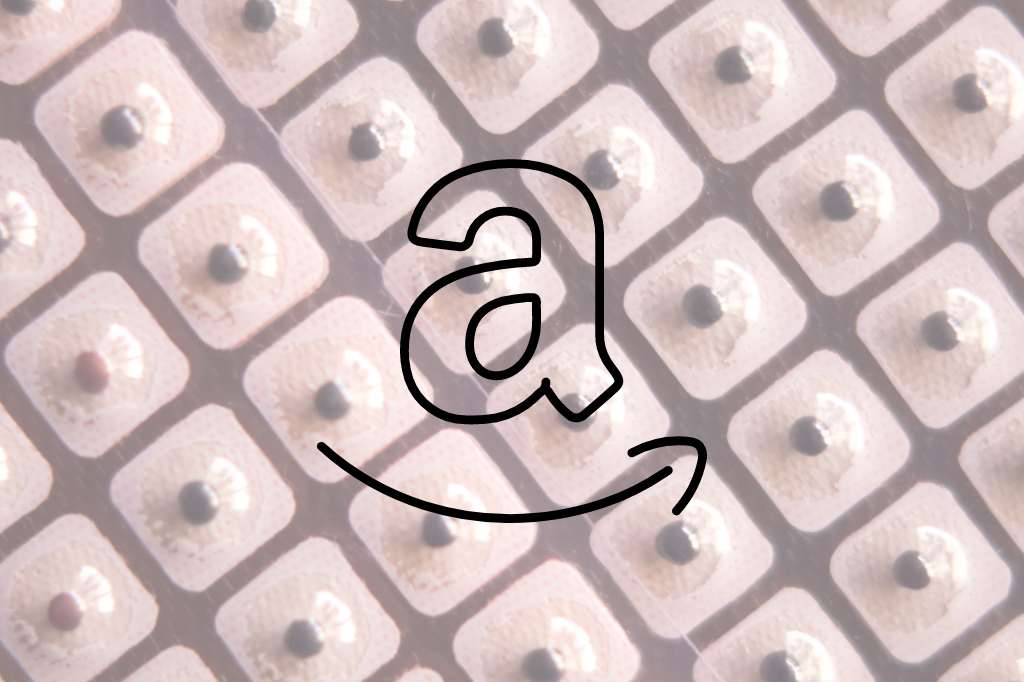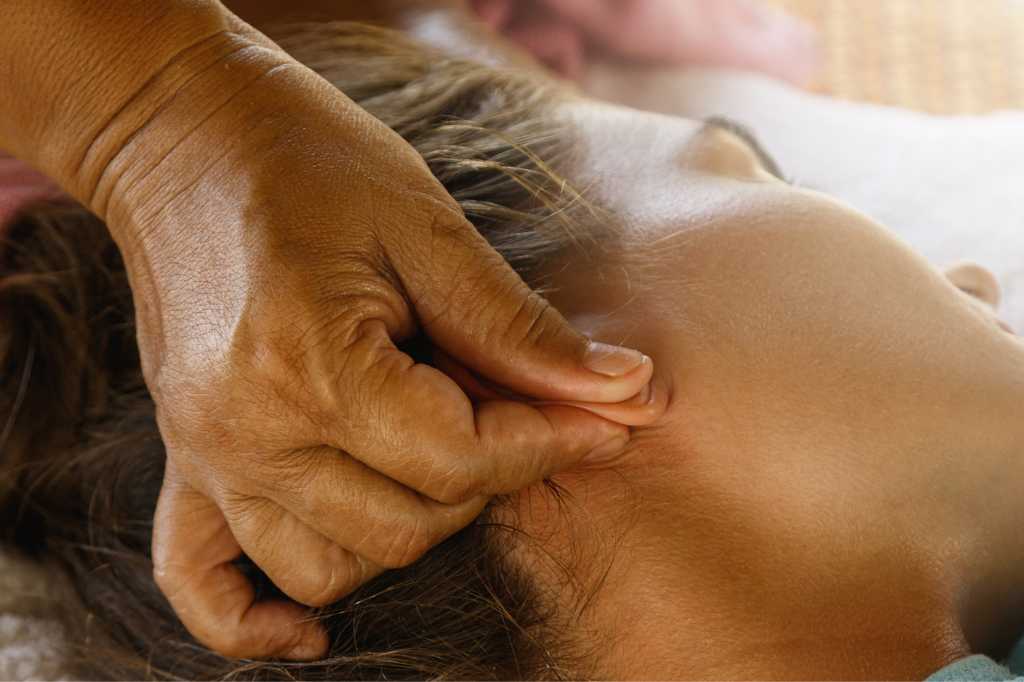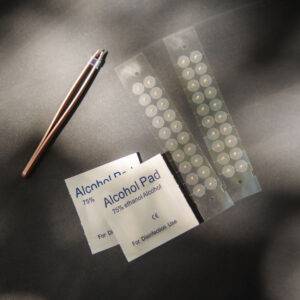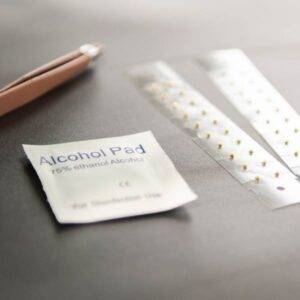With all types of ear seeds available on the market these days, what are the best ear seeds to buy?
That’s a fair question, but our answer is simple: the best ear seeds are the ones you’ll actually use.
A variety of ear seed types exist, but generally, all ear seeds share these common features:
- Widely accessible (able to be ordered online, including through our ear seeds store)
- Relatively inexpensive
- Easy to self apply
If you purchase ear seeds and let them sit in your bathroom or medicine cabinet, they have zero benefit to you. So decide which type of ear seeds you would like to try, purchase them, learn how to effectively apply them, and observe how they help you with the condition or symptoms you’re experiencing.
What is an ear seed?
Let’s begin with introducing what an ear seed is. Ear seeds are small beads or pellets that are placed on specific acupressure points on the ear to stimulate these points and potentially provide therapeutic benefits. They are often used in a practice called auriculotherapy or ear acupuncture.

You can get an auriculotherapist to apply ear seeds for you. Or you can put them on yourself in front of a mirror, with a pair of tweezers, and with ear seed placement charts to guide you. If you’re just getting started, we recommend a 30-minute virtual consultation with one of our ear seeds coaches.
Different types of ear seeds
All sorts of ear seeds exist today:
- Vaccaria seeds: These are the most common type of ear seeds and are often used in traditional Chinese medicine (TCM). Vaccaria seeds are small, round, and typically tan or beige in color. They are attached to adhesive tape and applied to the ear acupressure points.
- Metal ear seeds: Some ear seeds are made of metal, such as stainless steel or silver. These metal ear seeds may be used for longer-term stimulation of acupressure points and are often preferred for their durability.
- Swarovski crystal ear seeds: These ear seeds are designed to be aesthetically pleasing and are often used in cosmetic auriculotherapy. They are made with Swarovski crystals and can be applied to specific ear points for both therapeutic and decorative purposes.
- Gold ear seeds: Similar to metal ear seeds, gold ear seeds are made of gold or gold-plated materials. They are believed by some to have additional therapeutic benefits due to the properties of gold.
- Pellets or beads: In addition to seeds, some practitioners use small pellets or beads made of materials like magnetite or stainless steel. These pellets are placed on the ear points and can provide acupressure stimulation.
- Stainless steel ear tacks: These are tiny, sharp stainless steel needles that are inserted into specific ear points. They are often used by licensed acupuncturists and are more invasive than traditional ear seeds.
- Magnetic ear seeds: Magnetic ear seeds contain small magnets that are believed to provide therapeutic benefits through magnetic field stimulation. Some people prefer these for their non-invasive nature.
What does the research say about the best ear seeds?
A majority of research studies using ear seeds in auricular acupressure intervention groups tend to use Vaccaria seeds and/or magnetic pellets. Vaccaria seeds are the most innocuous. They’re also on the cheaper end of ear seed styles.
For these reasons, researchers like to select these for their methodology. This is not to say that Vaccaria seeds are necessarily the best ear seeds — they’re just what we often see in the peer-reviewed literature.
The best ear seeds are…
1. The ones that fit your lifestyle
This may sound over the top, but grab a pen and paper or open the Notes app on your phone and jot down what you want to get out of the ear seeds.
Now, think about where you’ll be wearing your ear seeds, and anticipate the reactions you might get from others.
Here are some considerations:
- Do you work in a corporate job outside the home? If so, you might want to avoid the Vaccaria seeds, which resemble Band-Aids. Instead, consider the 24K gold or silver stainless steel ear seeds, which are more inconspicuous, more appropriate for the office, and more classy.
- Do you want ear seeds that look more like jewelry? The best ear seeds for you might be the Swarovski crystal ear seeds, which are louder and have the bling appeal.
- Do you tend to stick around the house? Well, in this case, it doesn’t matter which ones you get — try a few different kinds and see what you like the most!
2. The ones that work well with your body
While side effects of ear seeds are rare and short-lived, what may be suitable for one person might not be for another. People with metal or gold allergies or sensitivities should avoid using metal or gold ear seeds to prevent skin irritation or discomfort.
If you have implanted medical devices, like a pacemaker or insulin pump, magnetic ear seeds should be used with caution, as they may interfere with these devices.
Vaccaria seeds and other small pellets or beads are generally well-tolerated by most individuals. However, anyone with a known allergy or sensitivity to adhesive tape or skin products should be cautious when using ear seeds attached with adhesive.
If you have any underlying medical conditions, allergies, or sensitivities, a healthcare professional, auriculotherapist, or ear seeds coach can provide personal guidance to ensure that your chosen ear seeds are the best ear seeds for your specific needs and health considerations.
To sum it up
People choose one ear seed type over another for all sorts of reasons. At the end of the day it doesn’t really matter which kind of ear seeds you go with as long as they’re the best ear seeds for YOU — your preferences, your lifestyle, and your unique body composition.

Happy earseeding!
References:
Tan, J. Y., Molassiotis, A., Wang, T., & Suen, L. K. P. (2014). Adverse Events of Auricular Therapy: A Systematic Review. Evidence-Based Complementary and Alternative Medicine, 2014, Article ID 506758, 1-20. https://doi.org/10.1155/2014/506758




